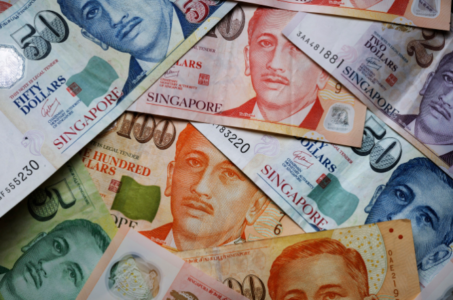The local currency gains strength as MAS maintains a hawkish stance, while the Federal Reserve leans toward a dovish outlook.
SINGAPORE: The Singapore dollar has reached its highest level in almost a decade, driven by traders reacting to the Monetary Authority of Singapore’s (MAS) relatively hawkish policy stance, especially in contrast to the Federal Reserve’s dovish outlook. The local currency surged to levels against the US dollar not seen since 2014, hovering around the 1.30 per dollar mark during early trading on Monday.
So far in 2024, the Singapore dollar has appreciated by approximately 1.5%, making it the second-best performing currency in Asia, following Malaysia’s ringgit. The MAS, which primarily uses the exchange rate as its main monetary policy tool, decided to maintain an appreciating bias for the local currency during its July meeting, a move aimed at controlling inflationary pressures in Singapore.
In addition to the MAS’s stance, the Singapore dollar has gained further momentum from an upgrade in the country’s economic growth forecast. Last month, the government raised its 2024 GDP growth projection to a range of 2% to 3%, up from the previous forecast of 1% to 3%. This upward revision was driven by an optimistic outlook for external demand, which further boosted confidence in the Singapore dollar.
On the other hand, the US dollar has been under pressure after Federal Reserve Chairman Jerome Powell signaled that interest rate cuts could be expected in the near future. With the possibility of US rates declining as early as next month, the greenback has weakened against major currencies, including the Singapore dollar.
Given the strong economic fundamentals in Singapore and the MAS’s current policy stance, analysts predict that the Singapore dollar could continue to maintain its strength in the coming months, especially if external demand remains robust and inflationary pressures continue.
Meanwhile, global markets will be closely monitoring the Federal Reserve’s next policy moves, which are likely to influence the US dollar’s trajectory against its Asian counterparts.








